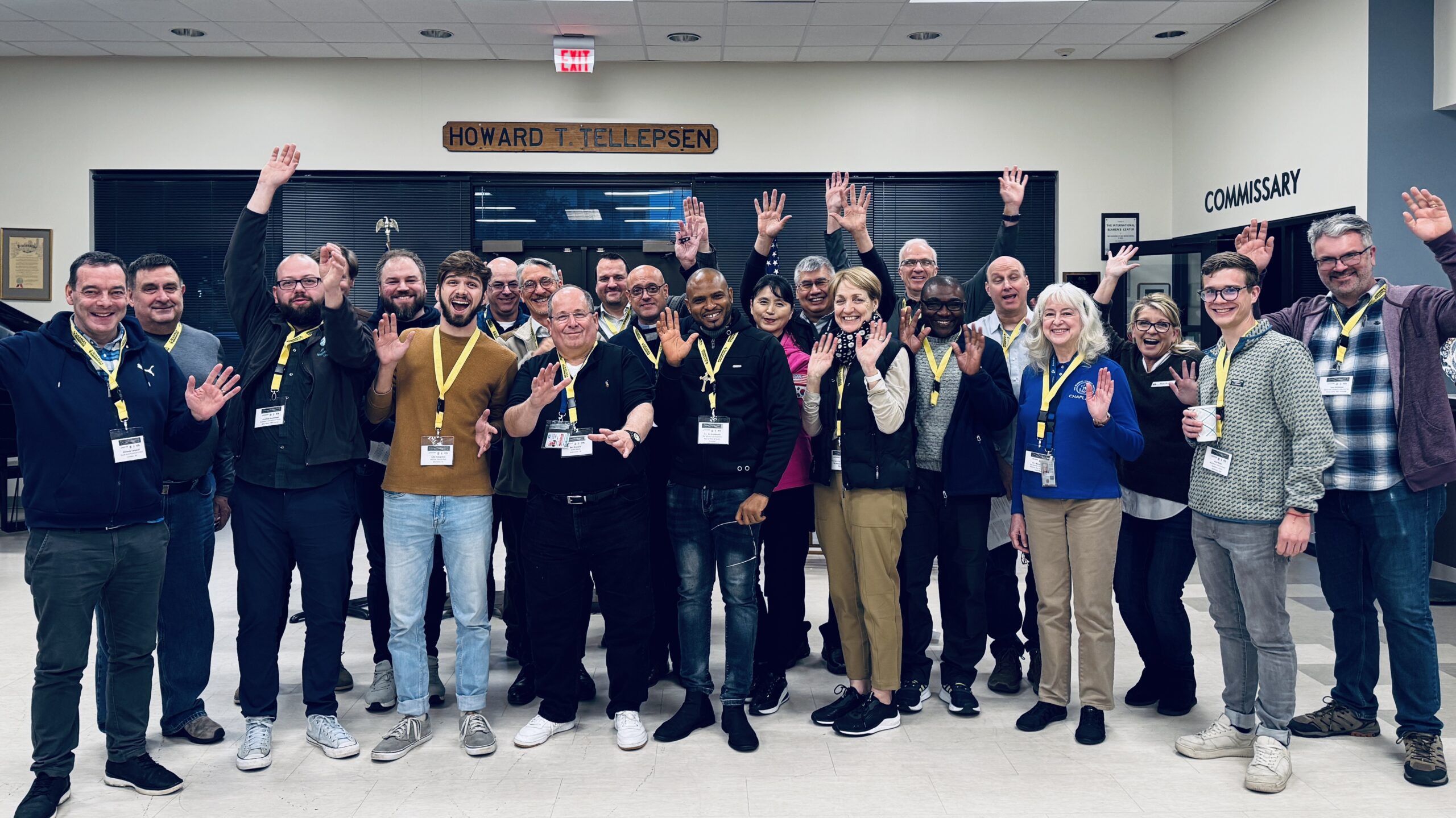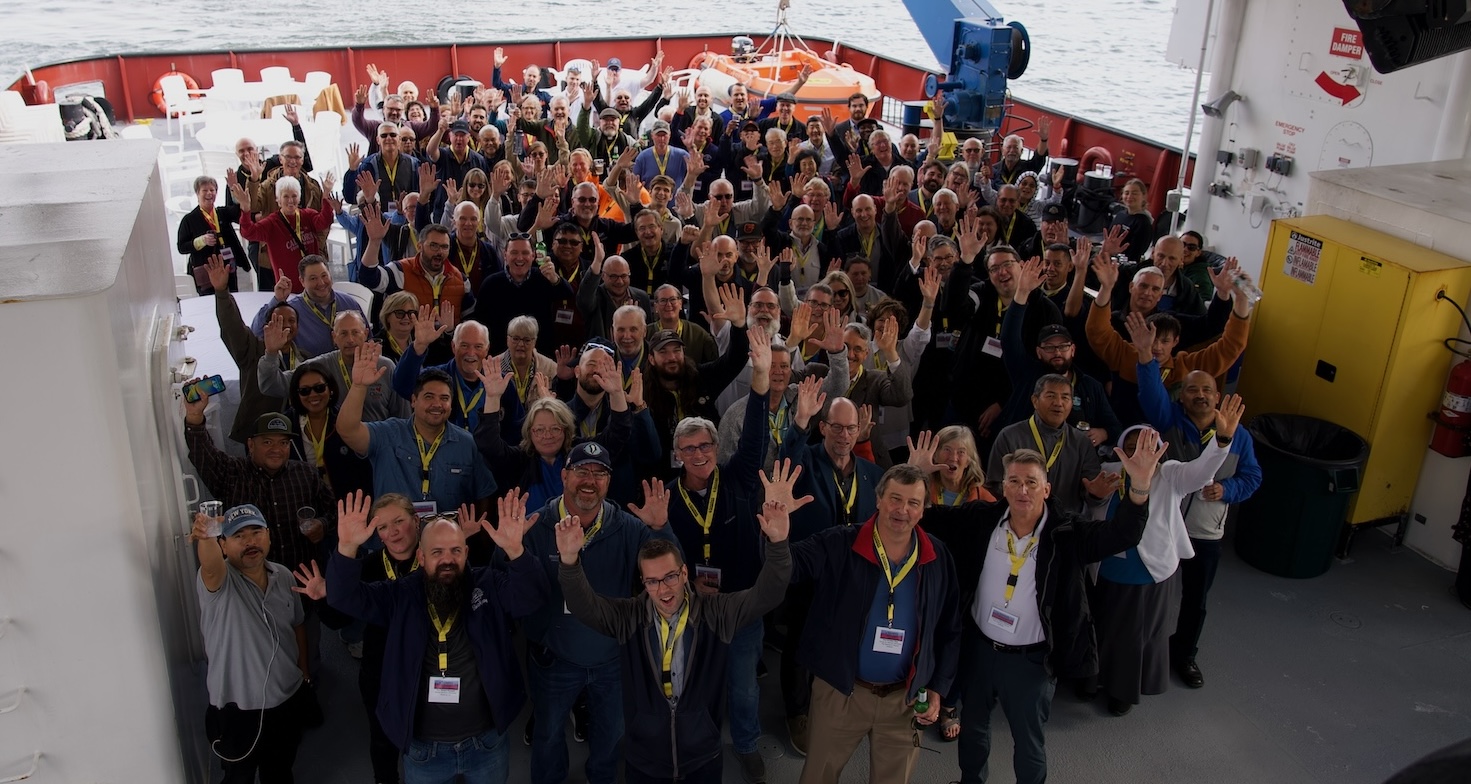by Kevin Walker, NAMMA
MARE Training
A top priority of the developing strategic plan for NAMMA is the focus on training to attract and retain people in seafarers’ ministry. This continues a trend developed in the last few years: NAMMA has prioritized training at its conferences and seminars, and also taken up management of the Houston School (houstonschool.namma.org). In the recent past we have run many online sessions using GotoMeeting and GotoWebinar and developed other digital resources like the MARE Report online. Most successfully, we have happily partnered with the Merchant Navy Welfare Board to build the Ship Welfare Visitor online course (shipwelfarevisitor.com), in which over 350 learners worldwide have enrolled in the last few years.
Now, with the wonderful support of the TK Foundation and other partners, we are continuing our mission of seafarers’ welfare education by supplementing and pulling together these resources in an online platform of courses (maretraining.com) available to a variety of people in seafarers’ ministry. These online courses do not replace in-person training, but will supplement it and reach the many other people who cannot attend events like the Houston School. Some of the material will be repurposed and updated versions of material that was previously available elsewhere, but we will also be producing a number of new titles. We hope to add about 10 courses to the platform each year, and welcome content or ideas from other members or partners that fits the goals and formats of our learning platform.
But as we build that online platform, we are asking ourselves a few key questions about how online learning management systems should work. That a particular approach to online learning is popular in the industry does not necessarily mean that it is effective, and even if it is effective for some educators it may not be suitable to our online platform. Two trends we have been particularly interested in studying are interactivity and “gamification.”
Gamification and Interactivity
Gamification can be broadly defined as encouraging learner participation with incentives like “badges,” “scores,” and competition. A prominent example of gamification in learning technology is Duolingo, a popular language learning app. All learning on Duolingo takes the form of test questions posed by a cute-looking owl named Duo, users are rewarded for correct answers and continued study with “experience points,” advancement in skill “level,” and the in-program currency that can be traded in for benefits.1 Other rewards include points for posting to message boards in the target language, a running tally of how many days, and specialized “badges” for particularly ambitious study programs. Duolingo has been quite successful in the field of language learning, announcing that it has 300 million users, 25 million of whom are active, in 2018.2 But is its emphasis on gamification all that is cracked up to be? The number of active users has not grown with growth in overall users, suggesting that users generally do not remain interested forever; and language learning is a longer and more engaged process than even the most ambitious plan for seafarers’ welfare education. Looking at seafarers’ welfare as it stands, our capacity as organizations, and contemporary research into gamification, we have come to the conclusion that the best education practices our online platform can take from gamification are emphasizing personalized interaction with material and encouraging active engagement with limited use of a reward system.
Gamification for NAMMA – Upsides and downsides
Interactive technologies and gamification appear to solve two potential weaknesses of our courses: motivation to learn and engagement with the material. Because our courses are asynchronous (not taken at the same time) and do not have human instructors, it is easy for learners to lose interest due to lack of pressure. Furthermore, course content like videos and written text are easy to consume passively without really learning anything. If learners are encouraged to keep at a course by a scoring system, and presented with challenges that keep them actively engaged, they can be expected to get more out of our courses. On the other hand, our courses are short by design, so not too much motivation is needed to complete them, and whatever “score” a learner accumulates is not likely to stay on their mind for a long time. So the parts of interactivity and gamification of most interest to us are the parts that incentivize and deepen learner engagement in the short term.
One recommendation in the literature for online learning technologies is something that we already have: a collection of online resources that learners are free to consult for additional information.3 This is an advantage of online learning that in-person learning has difficulty replicating, but of which we have up until now made relatively little use – the Ship Welfare Visitor course, for example, includes links to lots of other websites for further reading, but the questions are all about the video content. For evaluation purposes, this makes sense – correcting a learner’s independent research is hard for a human instructors and impossible for computerized systems. Evaluation is not the only reason to have assignments, however. Small research assignments can increase the breadth of knowledge among learners, encourage them to develop their own interests, and, most importantly, make them active participants in the learning process. As long as the majority of learners undertake such assignments in good faith, there shouldn’t be a need to pass or fail their responses. We include multiple-choice questions to test learner comprehension as well, but the point of these questions is just to have learners think about things for themselves and go beyond the course material.
Another benefit of interactivity in online learning that many4,5,6 of the sources surveyed stressed was its potential for connecting learners – when studies on gamification were done, the “games” studied were always multiplayer, and Jaggars’ and Xu’s study of online courses and student performance found a positive correlation between student performance and quality of human interactions, but not between student performance and use of technology per se. According to van Roy and Zaman, gamification works when it addresses basic psychological needs like relation to others.7 Learners are more likely to work at a course when they feel like there is someone that they can please if they do a good job or displease if they do a bad job. On one hand, this emphasis on human relation is a challenge for our platform, since our courses are taken individually and with no human instructor on the other end. On the other, we have many ways of increasing the feeling of human contact – we work at using a more conversational tone in our lesson texts, and our non-evaluated short answer questions are presented as “survey questions,” with the idea being that, while instructors’ approval of answers is not needed to progress through the course, the answers will be read and taken seriously.
On the flip side, Van Roy and Zaman point out that gamification that focuses on novelty or imposes an arbitrary set of rules and incentives on learning can actually decrease motivation. The idea is that learners also have a basic psychological need for autonomy – if an interested student feels like they are being patronized, or get hung up on the artificial rewards system, they may lose sight of their original motivations and then lose interest in the whole thing. Thus the incentives of a gamified system should align with the actual goal of the content rather than distract from them. The best approach we can take to gamification as incentive, then, is to make our rewards systems unobtrusive and tied to the actual work of ministry to seafarers, like badges unofficially certifying learners’ qualification to visit ships when they complete the ship welfare visitor course. Anything more complicated than that would be counterproductive.
Conclusion
In summation, our approach is to incorporate the simpler insights of gamification and interactivity while avoiding their more distracting and costly forms, focussing on deepening learner engagement in short courses. We do this by incorporating open-ended survey and research questions into our course material, trying to adopt a less impersonal voice in our lessons, and with limited, ministry to seafarers-oriented use of award systems. With these implemented, we hope that we will have given seafarers’ welfare workers challenging, engaging lessons that they can quickly implement in their own practice.
Endnotes
- https://www.duolingo.com
- https://techcrunch.com/2018/08/01/duolingo-hires-its-first-chief-marketing-officer-as-active-user-numbers-stagnate/
- Sultan, N., & Al-Lail, H. J. (Eds.). (2015). Creative learning and moocs : harnessing the technology for a 21st century education.
- Jaggars, S., & Xu, D. (2016). How do online course design features influence student performance? Computers & Education, 95, 270-284.
- Berns, A., Isla-Montes, J., Palomo-Duarte, M., & Dodero, J. (2016). Motivation, students’ needs and learning outcomes: A hybrid game-based app for enhanced language learning. Springerplus, 5(1), 1-23.
- Anderson, T. (2003). Getting the mix right again: An updated and theoretical rationale for interaction. The International Review of Research in Open and Distributed Learning,4(2).
- van Roy, Rob & Zaman, Bieke. (2017). Why Gamification Fails in Education and How to Make It Successful: Introducing Nine Gamification Heuristics Based on Self-Determination Theory. Serious Games and Edutainment Possibilities, 485-509.





